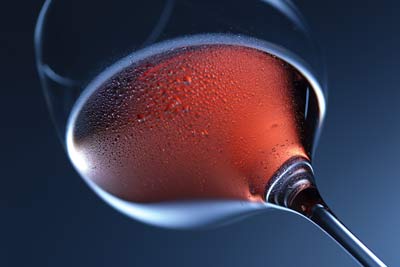Before tasting :
 Organize the tasting event in a healthy room (odor free), temperate (about 20 ° C) and enjoying a light as natural as possible (avoid too powerful or neon lighting). Pick white room or one with light walls; otherwise, provide white items such as tablecloth or napkins to allow the participants to use them as backgrounds in order to be able to define the wine colour properly while tasting. Use imperatively tasting glasses (INAO type) or any other type, as long as they are narrow on top to concentrate aromas to the nose. Hold spittoons, bottles of still water and white bread basket near each taster.
Organize the tasting event in a healthy room (odor free), temperate (about 20 ° C) and enjoying a light as natural as possible (avoid too powerful or neon lighting). Pick white room or one with light walls; otherwise, provide white items such as tablecloth or napkins to allow the participants to use them as backgrounds in order to be able to define the wine colour properly while tasting. Use imperatively tasting glasses (INAO type) or any other type, as long as they are narrow on top to concentrate aromas to the nose. Hold spittoons, bottles of still water and white bread basket near each taster.- Avoid consuming food or drink that might cover the taste of wine that you are about to enjoy. (Coffee, spice food, vinegar, garlic…) Also, avoid smoking or to perfume yourself before a tasting.
- Make sure to apply a tasting chronology, which is to follow a logical order: Start from the lightest wine to the most powerful; start with the white wine and rosé wine, then red wines continue; finally end up with sweet wine followed by fortified wines.
- Talk with the winemaker or the professional who introduced the wine to become familiar with the products that you will taste soon (picking process details related to winemaking, length and conditions of aging…)
- Try to be familiar with the main hints that can describe the colour of wine, the aromatic families as well as the flavours often found in wine. In order to put a name on what you feel more easily.
While tasting :
 PRE: Use an appropriate tasting sheet (download below), and do not be intimidated by a prestigious label, if it is not a blind tasting.
PRE: Use an appropriate tasting sheet (download below), and do not be intimidated by a prestigious label, if it is not a blind tasting.- APPEARANCE: Look at the “disk” (wine surface in the glass), to determine the evolution, so its probable age. Then swirl it in the glass and watch the clear transparency to define the hue (colour, clarity, brightness). Finally, look if it leaves tears on the glass that will help define its body: light, medium or full.
- NOSE: Smell the wine once without stirring (first nose) that will give an initial indication: pleasant or not. Then swirl the wine in the glass before the second nose. This will release the best flavours sometimes “closed” just after the opening of a bottle. Decant the wine into a jug before serving is also advised for some red wine.
- REVIEW TASTE: Take in every step a little bit of wine in the mouth, try to determine:
1. The attack, given by acidity: it can be soft (negative), flexible, straightforward, lively or sour (negative). It is also at this stage that the first flavour comes up. Spit.
2. The balance: it is the balance between acidity and smoothness for light wine (white and rosé). We add the alcohol power and the tannins quality to determine the balance of red wine. Spit again.
3. The “body” or the consistency of the wine; it can be weak (negative), light, medium, full or burning (negative). Spit out
5. Flavours: While keeping the wine in mouth, let it rolls around your mouth, breathing in and out through your nose, the is called the perception of flavours by retro-nasal, which are collected from the mouth to the nose. The noise caused by this step is not surprising, all professionals use this technique, and making some noise with your mouth is quite normal while tasting.
In general :
 Always follow your own sense while tasting wine; it is very important because the influence from others may mislead you. In addition, wine tasting is not an exact science, anyone can make mistake; so there is no need to have complex transcribing your own feeling.
Always follow your own sense while tasting wine; it is very important because the influence from others may mislead you. In addition, wine tasting is not an exact science, anyone can make mistake; so there is no need to have complex transcribing your own feeling.- Some food is nasty with wine; avoid consuming at the same time (vinegar, coffee, chewing gum, mint…)
- Never store wine in freezer even if you want to drink it very quick or very fresh, the best way is to leave it in the fridge or in cool cellar.
- The best time to do a wine tasting is either late in the morning or late in the afternoon, always before eating though. At these hours the senses are at their maximum potential.
- Pairing wine and gastronomy is an art; to avoid bad matching, we offer some ideas in the section: wine and gastronomy.
Envie de mettre en pratique !
Want to practice ! Download our tasting sheet.



























